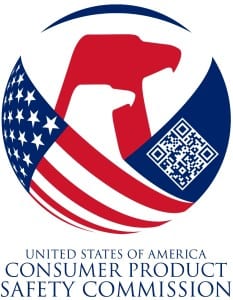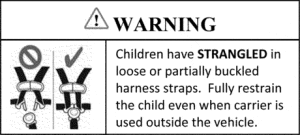CPSC Issues Direct Final Rule on the Safety Standards for Infant Bath Seats, Toddler Beds, and Full-Size Baby Cribs
 The Consumer Product Safety Commission (CPSC) on Monday, December 9, 2013, issued a direct final rule on the Safety Standards for Infant Bath Seats, Toddler Beds, and Full-Size Cribs. Under the authority of section 104(b) of the CPSIA, the CPSC is publishing this direct final rule, revising the CPSC’s standards for infant bath seats, toddler beds, and full-size cribs, to incorporate by reference more recent versions of the applicable ASTM standards.
The Consumer Product Safety Commission (CPSC) on Monday, December 9, 2013, issued a direct final rule on the Safety Standards for Infant Bath Seats, Toddler Beds, and Full-Size Cribs. Under the authority of section 104(b) of the CPSIA, the CPSC is publishing this direct final rule, revising the CPSC’s standards for infant bath seats, toddler beds, and full-size cribs, to incorporate by reference more recent versions of the applicable ASTM standards.
The rule is effective on March 24, 2014, unless the CPSC receives significant adverse comment by January 8, 2014. If the CPSC receives timely significant adverse comments, they will publish notification in the Federal Register, withdrawing this direct final rule before its effective date.
Infant Bath Seats
On September 25, 2013 the ASTM revised the safety standard for infant bath seats to the current ASTM standard, ASTM F1967-13. The differences between the previous version, ASTM F1967-11a and the current version, ASTM F1967-13 is outlined below.
Attachment Components. The 2013 version of the ASTM standard contains a new definition and requirement for attachment components. The requirement specifies that all components needed to attach the bath seat to the bath tub (attachment components) must be permanently attached to the bath seat. The CPSC is aware of a bath seat design that provides some attachment components that are separate from the bath seat. With this design, consumers must install the attachment components, consisting of adhesive discs, on to the bath tub surface. If the consumer fails to install the adhesive discs or fails to install them properly, these bath seats pose a tip over hazard.
Test Surface Preparation. ASTM F1967-11a specifies that bath seats be tested for stability on two specific test surfaces and also provides specific directions for preparing the test surfaces. The CPSC is aware of third party testing laboratories that interpreted one step in the testing preparation directions differently than ASTM intended. Following this alternate interpretation, the testing laboratory provided passing test results for some bath seats that otherwise would not have passed the stability requirement. Therefore, ASTM changed this section of the standard to specify more clearly test surface preparation.
Definition of a Bath Seat/Restraints Systems. In 2011, ASTM changed the definition of a “bath seat” to specify better the type of support that a bath seat provides. Before the ASTM F1967-11a version, the definition of “bath seat” did not specify the type of support the product provided. The revised (and current) definition states that a bath seat provides, at a minimum, support to the front and back of a seated infant. Thus, a product with only back support is no longer considered a bath seat. ASTM F1967-13 removes a provision that applied to bath seats with only back support because the provision is no longer relevant, given the current definition of “bath seat” as a product with front and back support.
Suction Cup Requirements. ASTM clarified two requirements for testing bath seats that use suction cups. The standard provides two suction cup test requirements: One provision evaluates the attachment between the suction cups and the test surface; the other evaluates the attachment of the suction cups to the bath seat itself. The first difference between the two versions clarifies the test requirement to emphasize that the bath seat must actually attach to the test surfaces as part of the test. The second difference specifies that this particular test only needs to be performed on one of the two test surfaces.
Markings and Labeling. ASTM made two minor changes to labeling requirements. One revision changed the test for label permanency to the relative humidity (RH) to be a range rather than a specific RH. The CPSC considers this a practical change that was needed because producing an exact RH for the test is difficult. The second change to the labeling requirements removes the word “adult” before the term “caregiver” in a provision that requires a warning to “be located on the product so that it is visible to the [adult] caregiver.”
Toddler Beds
On September 25, 2013, ASTM notified the CPSC that ASTM has revised ASTM F1821 again and has published a new version, ASTM F1821-13. This version contains 12 significant changes from ASTM F1821-09. These changes bring the ASTM standard into accord with the CPSC’s mandatory standard for toddler beds at 16 CFR part 1217.
Full-Size Cribs
The revised standard, ASTM F1169-13, differs from ASTM F1169-11 (the current CPSC standard) in one aspect that is reflected in two sections of the revised standard. ASTM F1169-11 requires that before and after testing a crib, the crib must comply with all general requirements of the standard. These general requirements address the distance between slats. However, the specific testing procedure for slats allows for one slat to fail during testing if the load at failure is at least 60 pounds and an additional 25 percent of the slats are tested and meet the 80-pound force requirement. Thus, a tested crib potentially could comply with the specific testing procedures for slats even if a slat failed during testing, but not meet the general slat spacing requirements because of the failed slat. In that situation, the crib would not comply with the requirements in the current standard because the crib would not meet all of the general requirements after the crib had been tested.
The revised standard, ASTM F1169-13, provides an exception for this specific situation so that a crib’s failure to meet the slat spacing requirement under the testing circumstances described above would not cause the crib to be considered noncompliant.

